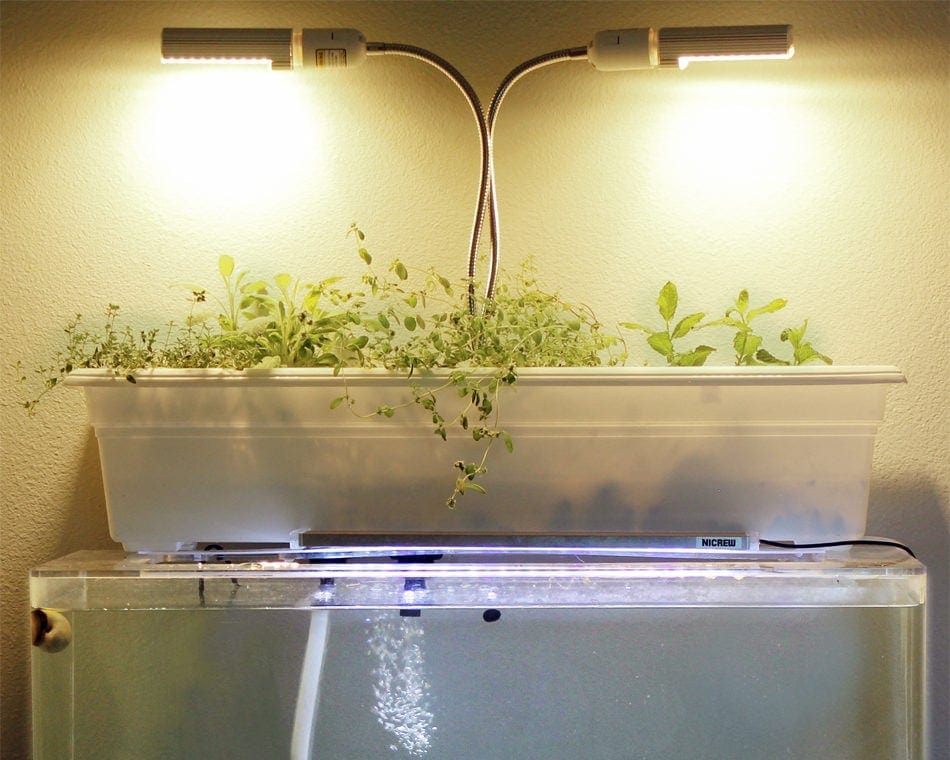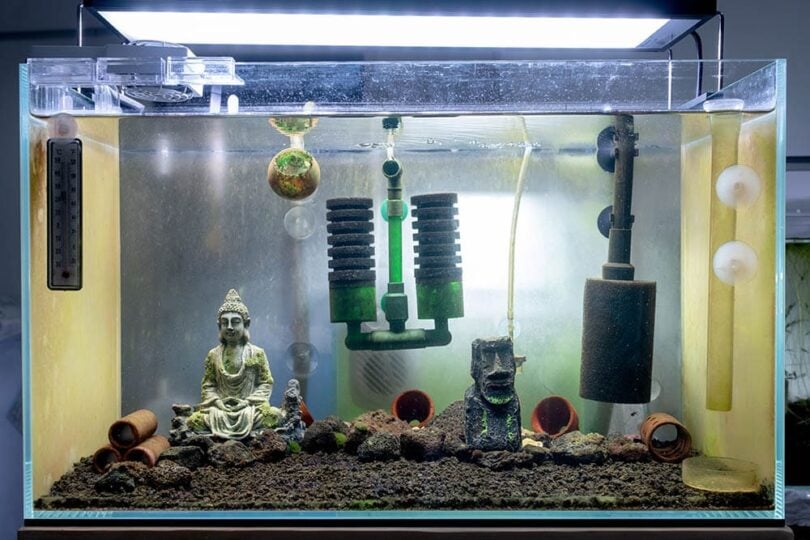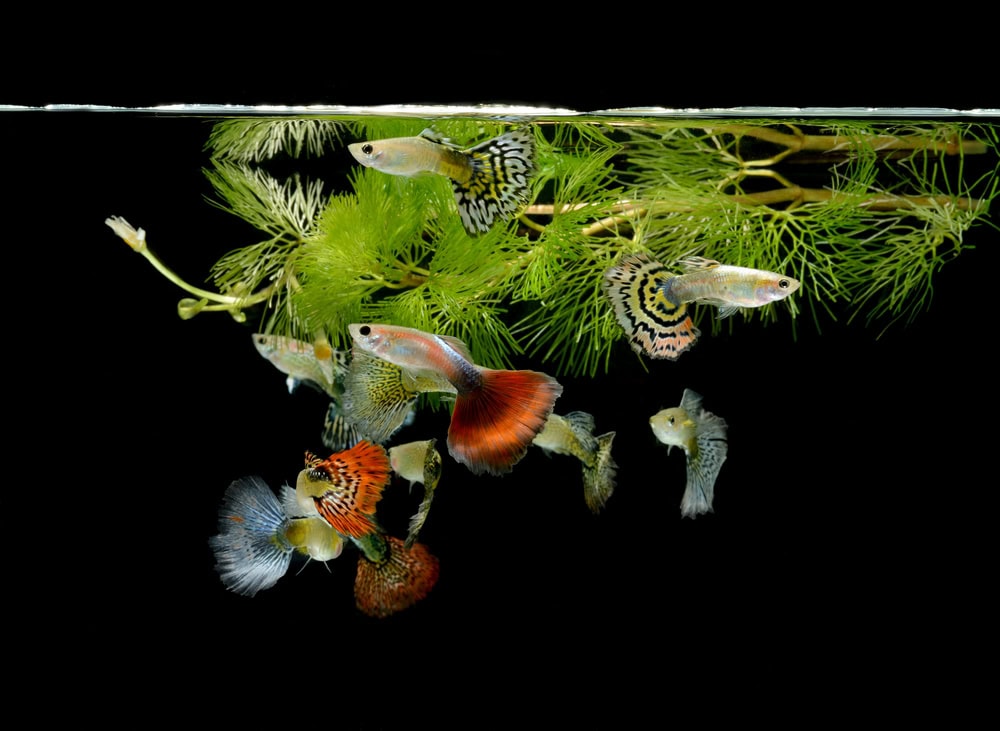How to Get Rid of Algae in an Aquarium: Top Products & Removal Methods

Updated on
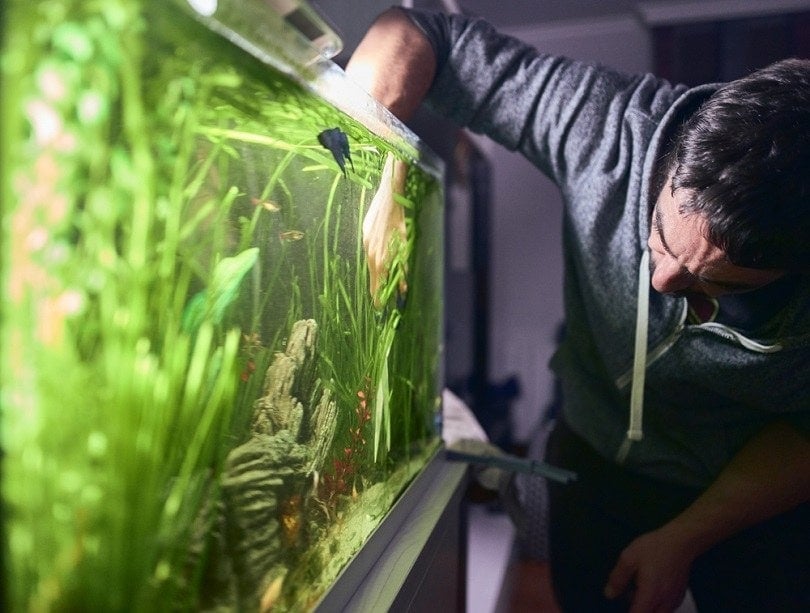
Algae is undesirable to many aquarium owners. It obstructs the view and depletes valuable nutrients from your live aquarium plants. Although algae provide a meal to herbivorous inhabitants, too much can be overwhelming to aquarists. Meanwhile, it grows faster than most inhabitants can consume.
Algae blooms if the environment is ideal in supporting its growth. If we start to remove the basis of what your algae are using to grow, the algae will slowly die off, yes, even that stubborn algae! To rid your aquarium of algae at a faster pace, we have written this article to help you remove all types of algae that grow within an aquarium. It is best to eliminate the desirable conditions algae uses to develop alongside a manual removal method.
A Quick Comparison of Our Favorites in 2024
| Rating | Image | Product | Details | |
|---|---|---|---|---|
| Best Overall |

|
Aquarium Fish Tank Glass Algae Cleaner |
|
Check Price |

|
KollerCraft Algae Scraper Multi-Tool |
|
Check Price | |

|
Mag-Float Glass Aquarium Cleaner |
|
Check Price |
Note: Clicking on the above links will take you to further information, current prices, and customer reviews on Amazon.
3 Best Products to Remove Fish Tank Algae
1. Magnetic Aquarium Algae Glass Cleaner
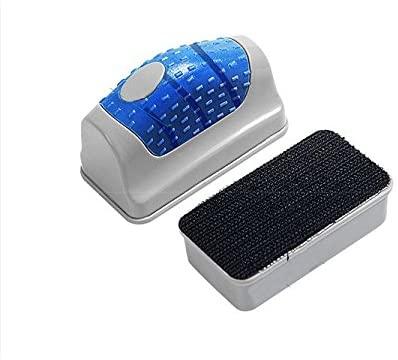
This is a great tool for keeping the algae out of fish tanks and a pretty popular option for good reason. This is simply a magnet that attracts algae as it passes over the algae. This type of algae cleaning tool can really only be used for the glass of the fish tank but not for the substrate, plants, or other things like rocks and ornaments.
It’s a really convenient tool because all you have to do is drag it along the glass to pick up the algae, it has a no-scratch, felt-lined handle to make sure that the fish tank will not get scratched or damaged. It’s really convenient because you don’t actually have to put your hands into the aquarium.
Simply insert the magnetic scrubber into the aquarium and drag the magnetic handle alongside the outside of the aquarium to make the scrubber follow on the interior. This product is also really convenient because it features a floating scrubber that when it is not attracted by the magnet on the outside will float to the surface of the water so that it does not have to be manually retrieved from the bottom of the fish tank.
- Floats for easy removal
- Magnetic so no need to put your hand in the tank
- Won’t damage the tank
- Only works on glass tanks, not plants, substrates, or rocks
2. KollerCraft Algae Scraper Multi-Tool
This is another great tool that is very convenient for algae removal. Once again it has some good customer reviews and has a reasonable price tag too. It is a multi-tool and comes with several algae-cleaning attachments.
It is safe for glass aquariums and can actually not be used on plastic ones. It has a great 22-inch long corrosion-resistant handle that keeps your hands dry while cleaning the algae. It comes with a great stainless steel algae scraper attachment for simple algae buildup, and for those denser and harder buildups, it also comes with a hard plastic scraper.
The third interchangeable head included in this multi-tool algae scrubbing kit is a small shovel to enable the user to pick up items that have fallen to the bottom of the aquarium.
- Good price
- Comes with multiple attachments
- Great option for glass tanks
- Not recommended for plastic tanks
3. Mag-Float Glass Aquarium Cleaner
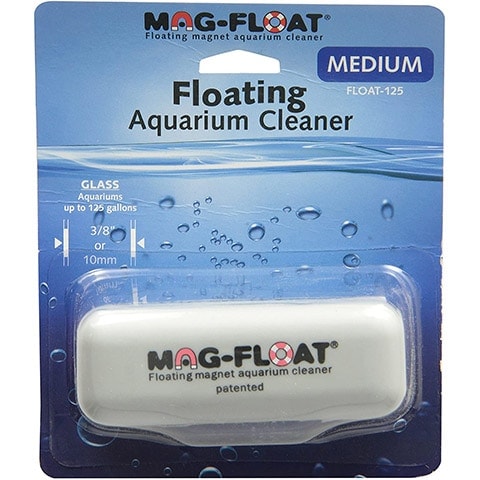
The Mag-Float is a fantastic tool for cleaning fish tank algae because it is very easy to operate. All you have to do is insert the scrubber into the inside of the aquarium and use the magnetic handle to guide it along the outside.
Anywhere that you move the magnet on the outside, the scrubber will follow on the inside. This scrubber also has a special floating ability that means it won’t sink to the bottom of the tank and it also makes it a lot easier to guide around corners.
This is one of the number one choices for cleaning algae off of the glass in a fish tank for many people. The customer reviews definitely speak to this fact, not to mention that the price tag isn’t even too high!
- Great price
- Magnetic
- Great for all tanks
- Does not clean plants, substrate or rocks
What is Algae?
Algae is a single-celled protist that comes in a variety of types and colors. It grows on the surfaces of your aquarium and attaches itself, making it hard to get off. Algae thrive in high-lighting environments with a tank valuable in nutrients to support their growth. Algae primarily look flat as it carpets along aquarium surfaces, as it lacks stems, roots, and leaves.
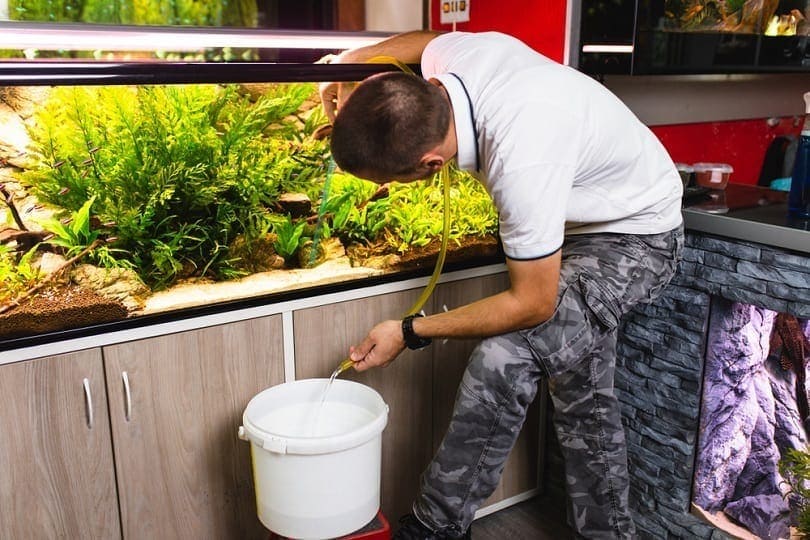
Algae are all plants that are commonly found in water. They can be very large such as seaweed and kelp that can grow to over several hundred feet in length and they can also be very small, even microscopic in size. The main type of algae that is found in aquariums is microalgae or algae that is very small and tends to grow on the bottom of the tank as well as on the sides.
The most common types of microalgae found in fish tanks are green algae, white algae, and brown algae. Algae are very important to all ecosystems on earth. They provide for a very large food source for most aquatic animals and they also account for over 70% of all oxygen that is created, oxygen which humans and other animals need to survive.
Algae are very resilient and can grow in salt water, brackish water, and freshwater too, not to mention that they can grow in virtually any condition of water including clean water, chemical runoff, animal runoff, and in virtually any other type of contaminant that could be in the water.
Almost all forms of algae grow through a form of photosynthesis where they convert sunlight, carbon dioxide, and other nutrients such as nitrogen and phosphorus into biomass, biomass being the food that the plant needs to survive and grow. Some forms of algae can also grow through heterotrophic methods, meaning that they can use starches and sugars to grow. Some forms of algae can even use autotrophic growth methods (photosynthesis) as well as heterotrophic growth methods in combination.
There are tens of thousands of different species of algae and one of their main drawbacks when it comes to being in aquariums is that all forms of algae reproduce much faster than any other plants known to man.
There are a few benefits that algae come with, however of course not when your own fish tank is involved. Algae are great for recycling carbon dioxide and turning it back into breathable oxygen. Also, algae produce very high yields of biofuel that burns much cleaner than other fuels such as fossil fuels. The biofuel made from algae can also be used to create food or feed for farm animals. Algae can actually also be used to purify water systems and even to create a variety of products such as lubricants, plastics, cosmetics, and fertilizers among other things.

Types of Algae in Aquariums or Ponds
When most people think of algae, we think of the green chlorophyll-containing plant that takes over an aquarium in a green haze. Algae come in a variety of colors and growth patterns. Each type of algae thrives in a variety of conditions. It is essential to determine the type of algae growing in your aquarium before you attempt to remove it.
- Green algae: This is the most common growing algae familiar to most aquarists. These chlorophyll-containing protists grow in a light to dark green carpet along surfaces. It is the less stubborn algae to remove.
- White algae: This algae tends to look something like a web and can usually be found growing on decorations, driftwood, and rocks, but is rarely found on the glass of the aquarium.
- Golden brown algae and diatoms: Found in both fresh and saltwater aquariums, this type of algae is commonly widespread. The diatoms are the most abundant type and occur in salt or brackish water conditions as nannoplankton.
- Blackbeard algae: A black algae that resembles a beard. Blackbeard algae vary from dark green to dark black. Blackbeard algae originate from red algae commonly found in saltwater. This form rapidly takes over a freshwater or saltwater aquarium.
- Yellow-green algae: One of the rarest least prolific unicellular organisms appears in yellow and green. This is due to their chloroplasts containing different pigmentation. They readily grow in freshwater aquariums and will rapidly develop under ideal conditions. This type of algae is rarely found in saltwater aquariums, although it is not uncommon.
Common Types of Aquarium Algae & What Causes It
Before we look at how to get rid of fish tank algae, let’s first look at the common types:
Green Algae

There are actually several different types of green algae that can be found in aquariums. They can take the form of green hair algae, green spot algae, and green water algae that turn the fish tank into a green fog. Controlling this type of algae is a little easier said than done because each one has slightly different causes of growth and each one requires a slightly different treatment.
The most effective way to take care of green algae is by using a fish-friendly, algae-killing chemical. On a side note the problem with algae-killing chemicals is that many of the plants in fish tanks can also be negatively affected by them.
Green water is usually caused by too much light, high ammonia levels, disturbance of dirty substrate, and overall high nutrient levels. Green spot algae can be caused by high phosphate levels and low carbon dioxide levels, as well as too much light. Green hair algae can be caused by low nitrate levels, low carbon dioxide levels, and too much lighting.
To get rid of any and all of these green fish tank algae you will need to find the proper balance of lighting, carbon dioxide levels, and nutrient levels. Another good tip is to keep your filters and the tank itself clean, and also change the water fairly often.
White Algae
White algae is a fairly common form of fish tank algae. It isn’t dangerous for the fish but it can be a nuisance because it grows quickly and can envelop your fish tank. This type of algae is most often caused by having too much sunlight as well as improper nutrient levels.
White algae will usually take the form of a slick film or even something like a web. This kind of algae is often found growing on fish tank ornaments, driftwood, and rocks, but is usually not found on the glass of the tank.
White algae are best removed by changing the water often and keeping the filters well maintained as well as by removing it with an algae scrubber. It can also be treated by standardizing the nutrient levels and sunlight levels in your fish tank. Another good way to get rid of this type of algae is to get a few fish or snails that feed on it.
Brown Algae
Brown algae is perhaps the first type of algae growth that you may experience in your fish tanks is probably the most common. This brown algae can take the form of light fluff or spots. It tends to grow on the glass, the substrate, rocks, plants, and pretty much anything but the fish themselves.
This type of algae usually grows in newly established fish tanks and more often than not it will disappear completely when the fish tank stabilizes and the parameters of the tank have been brought up to standard.
There are a few different things that can cause brown algae to grow in your fish tank. These causes include low light, old light tubes, high levels of nitrates in the water, high levels of phosphate (which usually occurs due to overfeeding the fish), and a poorly maintained aquarium filter. Thankfully this type of algae is not too hard to get rid of.
All you have to do to get rid of brown algae is to turn up the light intensity and the duration for which the lights are on, replace old or worn-out lights, change the water regularly, decrease nitrate and phosphate levels, stop overfeeding the fish, and most important of all, keep the filter clean and well maintained.
How Does Algae Get Into a Fish Tank?
To be fair the algae didn’t really get into your fish tank, or in other words, it didn’t appear out of nowhere and just hitch a ride. The algae in your fish tank don’t come from the other plant life, the fish food, or even from the fish itself. Any and all algae that may appear in your fish tank, whether white, brown, or green, appears because it has always been in the water and just needed a chance to grow.
What Causes Algae In Fish Tanks?
Seeing as the algae found in your fish tank is a type of microalgae, meaning that it is very small, it is safe to assume that it has always been in the water. All water contains bacteria, micronutrients, and microalgae too. The reason we never see algae in our drinking water or in our toilets is that it doesn’t get a chance to grow. Everywhere water is treated with various chemicals that kill off most bacteria, the main one being chlorine.
Chlorine however does not have the ability to kill microalgae and therefore it is always present in the water supply. The reason it doesn’t grow or get a chance to grow is because there are no starches or sugars in our tap water. Also, the water we use spends most of its time in a dark pipe where photosynthesis is not feasible.
All of this being said if you leave a cup of water sitting still for a few days, especially if you leave it in the sunlight, it will start to grow algae. Therefore the algae in your fish tank got there when you put water into the tank, and it got a chance to grow thanks to the abundant light available as well as the mass of nutrients in the water.
In other words, there is nothing you can do to prevent algae from growing in your fish tank, but you can do several different things to remove it. A protein skimmer can also help keep your water clean.
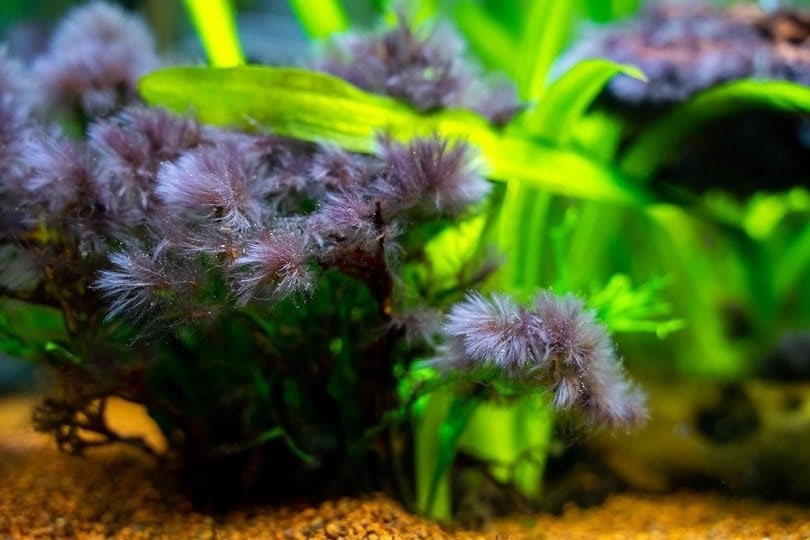
Is Algae Harmful to My Fish Tank?
In all reality, while algae may be somewhat unattractive, it isn’t actually all that bad for your aquarium. The main reason that people don’t like having algae in their aquariums is that it can make the fish tank look dirty and unclean, not to mention that it can make the water look unclear and slightly foggy.
For one, algae is good in small numbers because it can purify water. Fish hate waste in their water or dirty water in general and fish also need fresh oxygen. Fish tank algae have the ability to filter out some bacteria, chemicals, and toxins that are harmful to fish, not to mention that they produce oxygen which your fish needs to breathe. Besides that algae is also useful as a food source because many fish like to eat the stuff.
One of the drawbacks of having algae growth in a fish tank is that it can out-compete aquarium plants. Algae does require nutrients to grow and it will suck them out of the water, thus leaving less nutrients for your aquarium plants. Therefore if you have a planted aquarium it is recommended to have quite a few plants so that they will out-compete the algae for the available nutrients.
Another problem with algae is that it tends to grow very fast and can quickly overtake an aquarium if it isn’t maintained for a while, especially when lights are left on for a prolonged period of time.
Before getting your hands dirty and removing algae manually from your aquarium, it is good to prepare beforehand.
- Put an old towel next to the tank to dry your hands when you scrape off any algae.
- Keep an aquarium scrub brush or old toothbrush on hand to scrub the algae off.
- Keep a solution of apple cider vinegar and boiled water to soak solid surfaces with stubborn algae that will not come off.
Removing Algae
Algae are stubborn and hard to detach from surfaces, making it frustrating to determine a valuable method to remove the algae growing in your aquarium.
- Soak the algae-ridden decorations in a solution of boiling water and apple cider vinegar, according to the ratio 1tsp:400ml.
- Let the decorations soak for 2 minutes in the solution.
- Grab an aquarium scrub brush and start to scrape off the algae on the walls of your aquarium. The diatoms should come loose into the water.
- After the algae-ridden decorations have sat in the solution for 2 minutes, remove the items and place them on an old towel.
- Begin scrubbing the decorations with an aquarium brush or old toothbrush. The solution softens the algae making it come off easier.
- Once you remove the algae from the decorations, place the items in warm water and soak them for 5 minutes.
- You may then begin rinsing the decorations under a tap to ensure no apple cider vinegar remains.
- Do a water change and gravel vacuum to remove the algae diatoms floating in the aquarium’s water.
- Dry and place the decorations back into the aquarium with the algae removed.
- Keep the aquarium in a low-lit environment for a few hours to deter the algae from slowly growing back.
- Use a UV sterilizer to rid of algae and prevent the algae from coming back in the future. It is ideal for large and common outbreaks of algae that will not get under control.
- Reduce the amount of natural and artificial lighting the tank receives.
- Grow live aquarium plants to control the number of nutrients in the water.
- Keep algae-eating aquarium inhabitants in your aquarium that can consume the algae faster than it has the chance to develop.
Conclusion
Removing algae can be difficult and time-consuming. We hope this article has helped you remove algae from your aquarium and deter the algae from growing and developing in your tank. It is ideal for preventing the growth of algae rather than frequent manual removal. Ensuring you will not be stuck battling unwanted algae growth in your aquarium.
Check out some of our other top trending how-to guides:
- How to Clean an Aquarium Filter – Internal & External, 6 Easy Steps
- How to Build a DIY Aquarium in 15 Easy Steps
Featured image credit: enadan, Shutterstock













